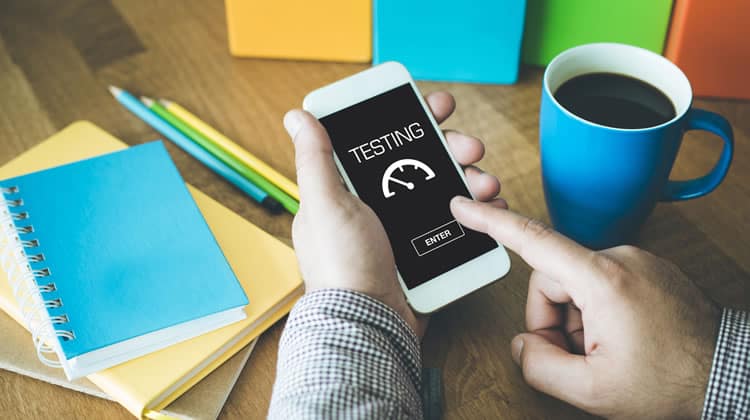Poor mobile performance and crashes are among the top reasons for app abandonment. That’s why tools like iOS crash reporting help catch issues before users do. But performance is only one part of the user experience puzzle — usability is just as critical.
Mobile app usability testing ensures your app is not only functional but intuitive, accessible, and enjoyable to use. In today’s competitive app market, even minor usability issues can lead to churn, low engagement, and negative reviews.
This guide will cover when to do usability testing, what to evaluate, how mobile usability testing methods differ from other QA processes, and which tools and metrics help you test mobile applications effectively — before launch and beyond.
What Is Mobile App Usability Testing and Why It Matters
Mobile app usability testing is the process of evaluating how easily real users can navigate and interact with a mobile application. It goes beyond functional QA to focus on clarity, intuitiveness, and satisfaction — key factors in delivering a seamless mobile experience.
Unlike general mobile applications testing, which checks for crashes, bugs, or performance issues, mobile usability testing looks at how real people use your app: Are buttons easy to tap? Is the navigation logical? Does the design support user goals?
Why does this matter? Because mobile usability directly impacts user retention, app store ratings, and overall product success. If your app frustrates users or makes them think too hard, they’ll abandon it — often within the first few sessions. That’s why testing mobile applications for usability should be a core part of your product lifecycle, not just a final checkbox before release.
When to Do Usability Testing in Mobile App Development
Timing is critical when it comes to mobile app usability testing. To maximize insights and avoid costly missteps, usability testing should be integrated throughout the product lifecycle — not just at the end.
Mobile usability testing before development
Early-stage mobile usability testing can be done using wireframes or interactive prototypes. At this stage, the goal is to validate navigation flows, test content clarity, and evaluate core functionality ideas. This helps teams quickly test hypotheses and reduce rework later. It’s an ideal time to assess mobile usability before any code is written.
Testing mobile applications during beta
During the beta phase, testing mobile applications allows teams to validate how real users interact with the app under near-final conditions. You can identify friction in task flows, misaligned UI expectations, or confusing microinteractions. Beta testing also gives early signals on app satisfaction, which can influence launch timing.
Mobile app usability testing after release
Even after launch, mobile app usability testing remains essential. In live environments, it helps detect usability issues that may not have shown up in test labs — especially those tied to specific devices, user contexts, or behavioral patterns. Post-launch usability testing also collects real-world user feedback, which is vital for improving retention, guiding feature updates, and maintaining high app store ratings.
What You Can Test in Mobile Usability
Mobile app usability testing isn’t limited to final products. Depending on the stage of development and product type, different aspects of the mobile experience can and should be evaluated. Here’s what to test:
Native mobile applications
For fully developed native apps — whether already in the App Store or Google Play, or in closed beta — testing mobile applications focuses on user interactions, navigation clarity, load times, and responsiveness across devices. Real-world feedback is especially valuable here, and tools like Bugsee can help identify performance blockers early on.
Mobile websites and web applications
Mobile usability testing also applies to web-based apps and mobile-first websites. These tests assess responsiveness, layout integrity, scroll behavior, and how well touch interactions translate across devices. Given the range of screen sizes and operating systems, even subtle issues can cause users to abandon a session quickly.
Mobile app prototypes
Before development begins, mobile usability tests on prototypes built with tools like Figma or InVision are crucial. These allow teams to validate assumptions, user journeys, and content structure early — before expensive development hours are spent. Early testing reduces long-term costs and helps teams build more intuitive products.
Mobile Usability Testing Methods You Should Know
Different mobile usability testing methods serve different goals — from in-depth analysis to rapid user insights. Here’s a comparison of the most effective methods used in mobile app usability testing:
| Testing Method | Description |
| Moderated Testing | Conducted with a facilitator guiding the session, ideal for detailed feedback and observation. |
| Unmoderated Testing | Performed without a moderator, useful for gathering fast, large-scale insights remotely. |
| Think-Aloud Protocol | Participants verbalize their thoughts while using the app — helps understand user reasoning. |
| A/B Testing | Compares two UI versions or features to evaluate which performs better with real users. |
| Task-Based Testing | Users complete specific tasks; ideal for evaluating goal completion and identifying friction points. |
These mobile testing types can be used independently or combined for comprehensive testing mobile applications across different development stages. Incorporating methods like session recording or crash monitoring ensures no critical user behavior goes unnoticed.
How to Start Testing Mobile App Usability in 6 Steps
Mobile app usability testing doesn’t have to be overwhelming. Here’s a practical step-by-step guide to get started with confidence:
- Define your testing goal
Are you validating navigation, feature usability, or overall flow? Clarity here helps avoid vague results. - Create realistic tasks or user scenarios
Tailor actions around what real users would do — sign-up flows, product searches, in-app purchases. - Choose a mobile usability testing tool
Platforms like UXtweak, Maze, and Lookback support both moderated and unmoderated testing mobile applications. - Run a pilot test
Test your process with a small group to catch friction points before full rollout. - Launch and observe user sessions
Watch how users interact in real-time — or use tools for session replays and crash diagnostics. - Analyze results and take action
Focus on patterns, pain points, and task completion rates. Iterate to improve overall mobile usability.
Starting with these six steps ensures your mobile applications testing efforts are focused, efficient, and actionable.
Conclusion: Mobile Usability Testing Is an Investment, Not an Afterthought
Mobile app usability testing isn’t just a QA step — it’s a strategic move that protects your product from costly UX flaws. If your app is clunky, confusing, or slow, users won’t wait around. They’ll leave.
That’s why forward-thinking teams test early — ideally during the prototype phase — and refine throughout the product lifecycle. From clickable mockups to post-launch usage tracking, usability testing should be continuous, not optional.
“If you don’t test your app, your users will and they might not stay to give feedback.”
Start small if you must. Use simple tools. But always prioritize real feedback over assumptions. It’s the best investment you can make in your app’s future success.
FAQ
What is mobile app usability testing?
Testing how real users interact with a mobile app to identify usability issues and improve UX.
When to do usability testing in mobile apps?
Start at the prototype stage, continue during beta, and after release for continuous improvement.
What are common mobile usability testing methods?
Moderated sessions, unmoderated tasks, think-aloud, and A/B testing.
How is mobile testing different from mobile application testing?
Mobile testing includes network/device checks; application testing focuses on the app UX and functionality.


